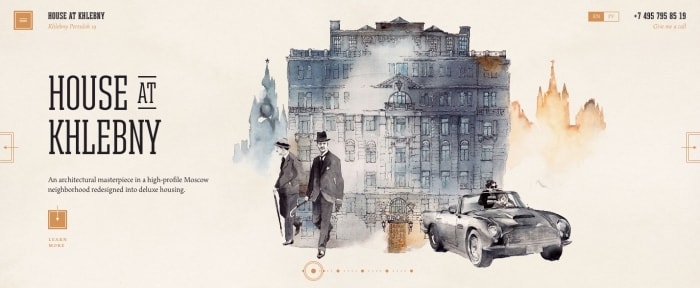15 Skills Every Design Client Expects You to Have
While every design project is a little bit different, almost every client expects you to be a jack of all trades to some degree. Regardless of the project, designers are often expected to provide a complete solution for clients, even though most of us don’t have all the same skills.
In addition to design, clients may ask for expertise in marketing, code, or illustration. It can be a difficult balance at times. But knowing what clients might expect can help you have a plan for how to deal with specific requests, whether it is offering a referral to someone else or adding a new skill to your portfolio.
Most of these examples come from personal experience. And while I didn’t fulfill all the requested needs, seeing what a client expects from their perspective is an interesting exercise!
The Ultimate Designer Toolkit: 2 Million+ Assets
Envato Elements gives you unlimited access to 2 million+ pro design resources, themes, templates, photos, graphics and more. Everything you'll ever need in your design resource toolkit.
1. Design Theory
Clients trust you to know your stuff when it comes to what looks good and how to work with colors, type and space. It’s a perfectly reasonable expectation, no matter what kind of designer you consider yourself to be.
The nice thing about clients that expect you to know design theory is that they will also trust your design decision-making. While some of this comes with time and having a solid client relationship, you can help reinforce the idea by clearly explaining the logical for specific design ideas clearly and in lay terms for clients. (Your expertise is part of why they hired you and what they are paying for.)
2. Print Design

Clients will often think you can take any website design and just turn it into something printable. They might even expect you to pull postcards from thin air. (Well not really, but you get the idea.)
While some designers work in both print and digital spheres, this is not always the case. It can be difficult for clients to know exactly what to expect. If you aren’t comfortable with print — or packaging or other tactile mediums — make that clear to the client and get help from another designer who is more print-fluent.
3. Website Design
The print versus digital dilemma goes the other way as well. Some clients think that shiny brochure can just be converted into a website. Or that you can take an old website design and “fix it” quickly.
It can be tough conversation when you have to explain that these things aren’t really interchangeable. But do yourself and other designers this favor: Explain it clearly and that it comes at a cost. Web projects aren’t just extensions of something else. Especially in today’s complicated web landscape, these projects need their own planning and care.
4. Copywriting

Some designers have come up in a world where they never have to write any of the copy. Others might be copywriting experts, but assuming one way or the other can lead to plenty of frustration.
As a designer, you should learn the basics of copywriting. For web designers in particular, microcopy is unlikely to come handed to you and you’ll need to feel comfortable writing little bits of text. (You probably won’t have to write main body copy though and if you are asked, have a referral handy.) You may also find that having a knack for headlines can really come in handy. Not only will it help you create a design that includes actual content, but you can also design with the actual lettering. This will make a dramatic difference when working with any type of speciality or novelty typesetting.
Good copywriting extends beyond the main messaging and branding for a project to all the surrounding parts as well, including web and print pieces and social media messaging. It can be a lot to think about.
5. Search Optimization
As with copywriting, most designers won’t be SEO experts, but some basic knowledge of how search works is really valuable. You’ll be able to recommend adding or removing text from certain pages or designing elements that can make it easier for users to find a website in search rankings.
This is equally important. Any mention of SEO and a client immediately envisions themselves in the top Google position. Have an open and honest conversation about how search will help and if that’s the desire, an SEO expert might be needed.
6. Logo Design

Logo design is a tricky part of the design business. It comes so easy for some designers while others truly struggle. Clients can often group all aspects of design into one bucket. Ask from the beginning of a project for clarification on the scope of work, including what elements they already have and what elements need to be created.
7. Photography
If you are like me, you know your way around Adobe Photoshop … but fumble when it comes to framing actual photos and thinking about ISOs.
Designer does not equal photographer.
Even the best designers in the world can really struggle when it comes to creating some of the images that make up great design projects. Clients don’t always see these as separate jobs, even though they are most of the time.
8. Illustration

See No. 7 and substitute “illustration” for “photo.”
9. Animation
The same applies when it comes to think about animation. While most designers can create a functional gif or make a hover action that moves, full scale animation is a lot more difficult.
Use available tools for elements when you can, but for projects that require an animator, help the client find someone with just that level of expertise.
10. Software Whiz

One of the most frustrating things a client expects is that you can make a bad/small/low resolution file usable. Sometimes there’s a little magic you can do. Sometimes there’s not.
Do the best you can. At the end of the day, the most valuable thing you can do is show the client when something isn’t usable. Saying a photo is of poor quality doesn’t have the same effect as popping it into place and letting them see that it is pixelated or blurry. This can take a few extra minutes in the beginning, but might save a lot of time later in the process.
11. HTML and CSS
Even if you are a web designer, are you a web developer? For some, the titles are interchangeable, while others design or work code, but not both. If you are in the camp of two separate roles, make sure your client understand this up front. Most clients have come to expect a one-stop-shop when it comes to website development and design.
12. Font Identification

You will be asked: “What font is that?” And expected to answer on the spot. This one’s an easy solve — What the Font can be your secret weapon!
13. Psychology
How a user might feel when they interact with a design is an important part of understanding behavior and conversions. Much of this comes back to analytics and science, while some of it is from experience.
You can probably explain easily why users like photos that show people or trust websites with a blue background. That’s all part of design psychology.
14. Lightning Speed

Most clients expect quick turnarounds. You aren’t going to have all week to make a correction or submit revisions. Mitigate some of these expectations with a detailed project timeline.
It’s also acceptable to help clients figure out what a reasonable expectation of time looks like. If you aren’t charging by the hour — many design projects come with flat fee structures — it can be tough for them to truly understand how long something takes. Make a habit to respond to requests with when you expect to have something back to the client.
15. Mindreading
It might sound cheesy, but clients do expect designers to just “know” what they want or “see” what they see. More times than not this leads to miscommunication.
Rather than getting frustrated, try to ask more questions. Just as you would show a client something rather than tell them about it, ask the same of them. Get them to show you things they do or do not like on the path to planning a project.
Design is a visual form of communication. Try to communicate visually with clients to make the process easier on everyone.
Conclusion
The key to managing client expectations is to help your clients learn how you work and how you can best work together. Good communication will help you get on the same page quickly at the start of a project and stick together until it is finished.
While it can be challenging to admit you don’t have a certain skill or need to pass something on to someone else, it’s a lot better than making a mistake or missing a deadline. Be honest about your design role with clients so that you can work together in the best way possible.


